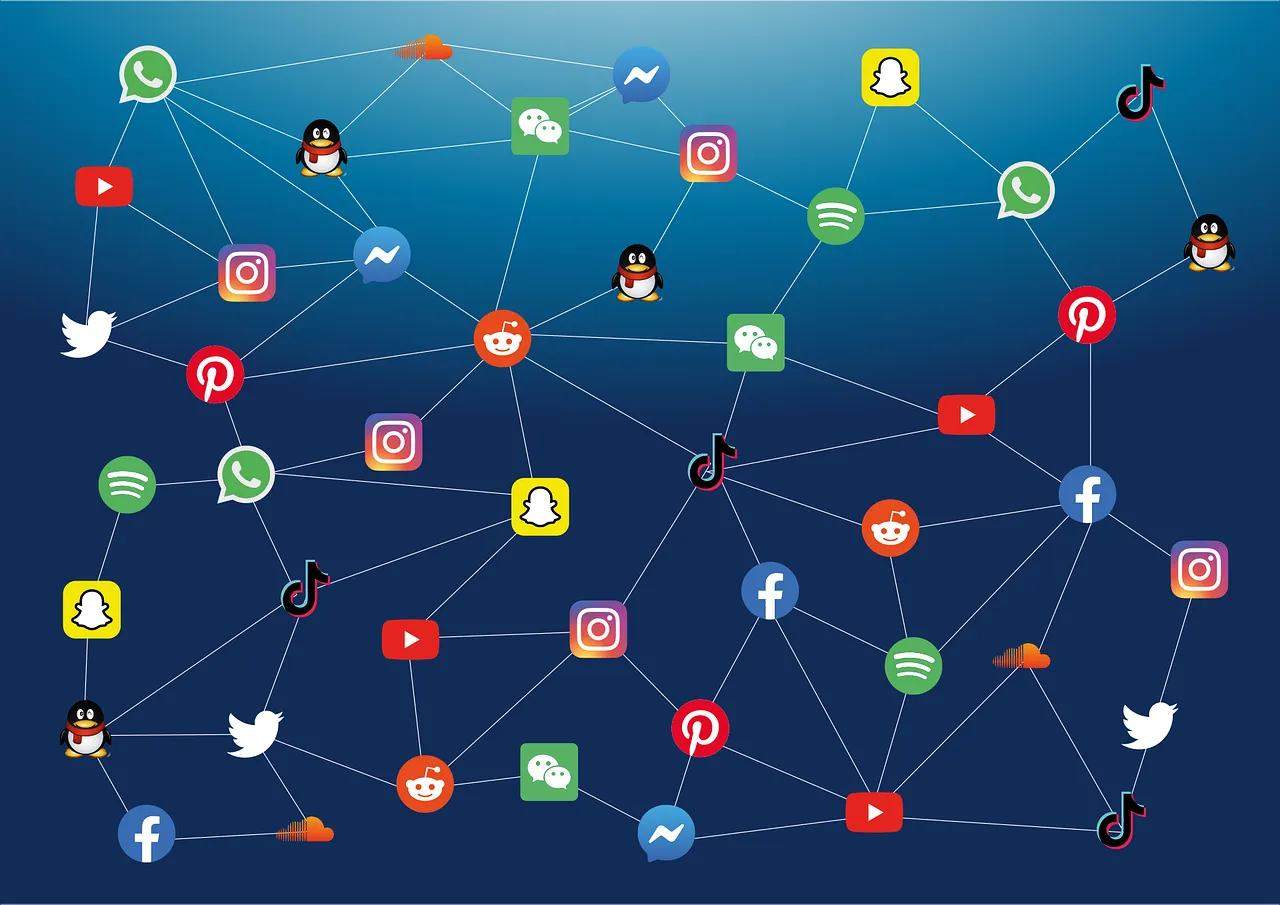Social Media Algorithms: An In-depth Overview

In our digital age, social media platforms are the cornerstones of our daily lives, shaping our interactions, perceptions, and decisions. Far from being passive receptacles of content, these platforms use complex algorithms to determine the content we see, when we see it, and how it is presented. Mastering these algorithms is essential for anyone aiming to maximize the benefits of social media, whether for personal enrichment or professional advancement.
A Brief History of Social Media Algorithms
In the early days, social media content appeared in chronological order, with the most recent posts appearing first. However, as user numbers surged and content volumes exploded, platforms needed more sophisticated systems to manage content display. By 2010, algorithms prioritizing content based on engagement metrics like likes, shares, and comments emerged. This shift towards engagement-focused algorithms paved the way for the current era, where AI and machine learning tailor feeds to individual users' behaviors, interests, and demographics.
Algorithmic curation has several advantages. It personalizes the user experience, aligning content with individual interests to increase engagement and platform time. For advertisers, algorithmic precision facilitates highly targeted promotions, ensuring content reaches the most receptive audiences, thereby maximizing advertising returns. Despite its advantages, algorithmic curation has notable drawbacks. It often results in 'filter bubbles,' digital environments where users encounter only content and opinions mirroring their existing beliefs and preferences. This limits exposure to diverse perspectives and can inadvertently reinforce existing biases. Additionally, the pressure to create 'high-performing' content, driven by algorithms that prioritize engagement, can lead to mental health issues like anxiety and depression.
Algorithms have several characteristics influencing our online interactions. They frequently favor emotionally resonant content, as it is more likely to be shared, liked, or commented on, and therefore more likely to go viral. Additionally, algorithms often create 'echo chambers,' similar to filter bubbles, but within groups or communities. In an echo chamber, shared opinions and beliefs are amplified and reinforced through repetition, while dissenting views are marginalized or ignored.
Manipulating Algorithms for Curating Your Feed
Users can actively curate their feeds and escape filter bubbles by:
- Interacting with Diverse Content: Actively engaging with diverse content signals interest in a broader topic range to the algorithm.
- Following Diverse Accounts: Consciously following accounts outside your usual interests or beliefs.
- Adjusting Settings: Some platforms allow settings adjustments to view varied content, such as chronological rather than algorithmically curated posts.
- Using Multiple Platforms: Different platforms have distinct algorithms and filter bubbles. Using multiple platforms diversifies content exposure.
- Reviewing and Updating Preferences: Regularly reviewing and updating social media platform interests and preferences ensures a more diverse content range.
Manipulating Algorithms for Growing a Following
Content creators and businesses aiming to grow their following can leverage the algorithm by:
- Consistency: Regular content posting signals active engagement to the platform, prioritized by most algorithms.
- Engagement: Content that encourages interactions, like likes, shares, comments, and saves, boosts algorithmic visibility.
- Collaboration: Collaborations with other creators introduce content to new audiences and signal content value to the algorithm.
- Quality Content: The content quality ultimately determines following growth success. High-quality, engaging, original content is more likely to be shared, liked, and algorithm-promoted.
Algorithm Bias
Algorithms, despite being viewed as objective tools, can inadvertently perpetuate existing biases based on race, gender, political opinions (based on engagement), or socioeconomic status. This occurs because algorithms are trained on historical data, which often contains biases. There is a growing need for 'ethical AI,' which involves designing algorithms that are aware of and actively counteract these biases. This not only involves technical solutions, such as developing algorithms that actively seek out and promote underrepresented content, but also broader societal changes, such as increasing diversity in the tech industry and actively involving marginalized communities in the development and oversight of these algorithms.
The Role of Artificial Intelligence
Artificial Intelligence (AI) plays a critical role in shaping and optimizing social media algorithms. As the volume of data generated by users increases, AI and machine learning techniques are essential for processing and analyzing this data to curate personalized content for each user. AI can help in identifying patterns in user behavior, predicting future behavior, and recommending content that is most likely to be engaging. However, as AI becomes more sophisticated, there are growing concerns about the potential for misuse, the lack of transparency in how decisions are made, and the potential for reinforcing existing biases. Therefore, it is crucial for developers to consider these issues and implement measures to ensure that AI is used responsibly and ethically in social media algorithms.
Effects on Brain Activity
Social media algorithms are designed to maximize user engagement, often leading to addictive patterns of use. These patterns can significantly impact brain activity. For instance, receiving likes, comments, or shares triggers the release of dopamine, a neurotransmitter associated with pleasure and reward. This dopamine release reinforces the desire to engage with social media, creating a feedback loop that can lead to addictive behavior. Over time, this can result in decreased sensitivity to dopamine, requiring more engagement to achieve the same level of satisfaction. This dependency can negatively impact real-world interactions, as the brain becomes wired to seek rewards from digital interactions rather than real-life experiences. Furthermore, the pressure to receive positive feedback on social media can lead to anxiety and depression, as self-worth becomes increasingly tied to online validation.
Mitigating Negative Effects
To mitigate the negative effects of social media on brain activity and real-world interactions, consider the following strategies:
- Set Limits: Use app features or third-party applications to set daily time limits on social media use.
- Take Breaks: Regularly take breaks from social media, especially during activities that should be enjoyed without digital distractions.
- Mindful Consumption: Be mindful of the content you consume and its effects on your mood and mental health.
- Diversify Activities: Engage in a diverse range of activities outside of social media, such as exercising, reading, or spending time with loved ones.
- Seek Professional Help: If you find it difficult to control your social media use or experience significant distress related to social media, consider seeking help from a mental health professional or consulting with AI models like ChatGPT or Bing.
Social media algorithms play a crucial role in shaping our online experiences, influencing our perceptions, behaviors, and interactions with the digital world. While they offer numerous benefits, such as personalized content and targeted advertising, they also have significant drawbacks, including the creation of filter bubbles, echo chambers, and the potential for addiction. By understanding the nuances of these algorithms, users can curate their feeds to reflect their interests better, break free from filter bubbles, and promote their content more effectively. Additionally, by being mindful of the potential negative effects of social media on brain activity and real-world interactions, users can take proactive steps to protect their mental health. Ultimately, navigating the complex landscape of social media algorithms requires a balanced approach that leverages their benefits while minimizing their drawbacks. By being aware of these factors, actively working to counteract their negative impacts, and advocating for responsible and ethical algorithm design, we can create a more inclusive, positive, and empowering digital landscape for all.
Article Links:






Thanks for reading!
TIME IS MONEY: Your Free Daily Scoop of Markets, Business, Tech, and Global News.
The news you need, the time you want.

Any Article Ideas? Email us.
Support/Suggestions email:
timeismoney@timeismon.com


